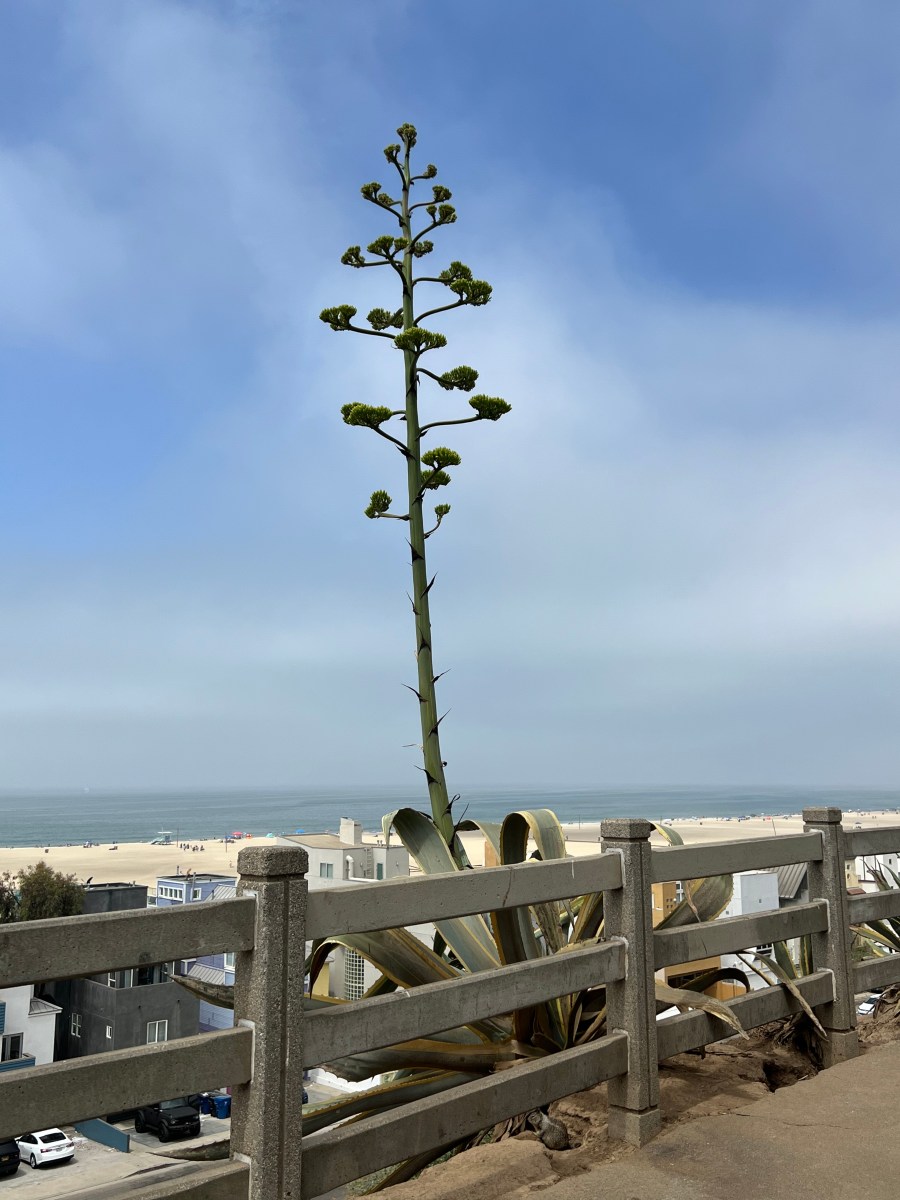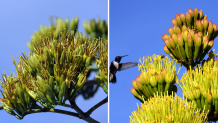A Palmdale man was shocked and confused when he noticed a large, mysterious stalk suddenly growing from a plant after more than 30 years in his yard.
Miguel Cuevas, an avid gardener, rushed online to research the mysterious phenomenon and discovered he was witnessing a rare blooming of Agave Americana, commonly known as the century plant, unfolding outside his own home.
The century plant, known for its spiky appearance and unique blooming cycle, is native to the desert landscapes of Mexico and Texas, making it perfectly adapted to Southern California's dry and hot climate. Contrary to its name, the plant doesn't actually bloom every 100 years. Instead, the century plant flowers around every 10 to 30 years in desert climates.

Get top local stories in Southern California delivered to you every morning. Sign up for NBC LA's News Headlines newsletter.
"We planted it in the early '90s when we moved into the house," recalled Cuevas.
His family was unaware of the plant's extraordinary characteristics when they bought multiple Agave Americanas from a local nursery because of their distinct blue-green color, he said.
Over 30 years later, he noticed an unusual growth coming out from the plant one day.
Local
Get Los Angeles's latest local news on crime, entertainment, weather, schools, COVID, cost of living and more. Here's your go-to source for today's LA news.
"Days are going by and this thing is just shooting up in the air," Cuevas said, surprised at the 30-foot-tall height the stalk reached during its bloom. "Our neighbors asked if we planted a new tree because it was so high in the air that they could see it from their yard."
Only two to three months later, his century plant began to bloom, growing branches full of vibrant green pods. Hummingbirds and bees were drawn to the tall flowering structure.

"Once it gets to its height, it branches out and it looks almost like a tree," explained Allison Keeney, assistant director of the UCLA Mildred E. Mathias Botanical Garden.
The blooming process is essential for its reproduction, with the pods containing seeds which eventually fall and spread Agave Americana elsewhere.
While the blooming cycle signifies the end of the individual plant’s long life, Keeney explains that the century plant ensures its legacy through the formation of “pups,” offshoots of the plant that emerge from its base, guaranteeing the continuous growth and existence of the species.

Cuevas observed the emergence of these pups, which he calls "baby cactus," indicating the future blooming of other century plants in his yard.
"Now I'm just waiting for another stalk to take off," said Cuevas, eager and hopeful to experience this rare natural process again.



